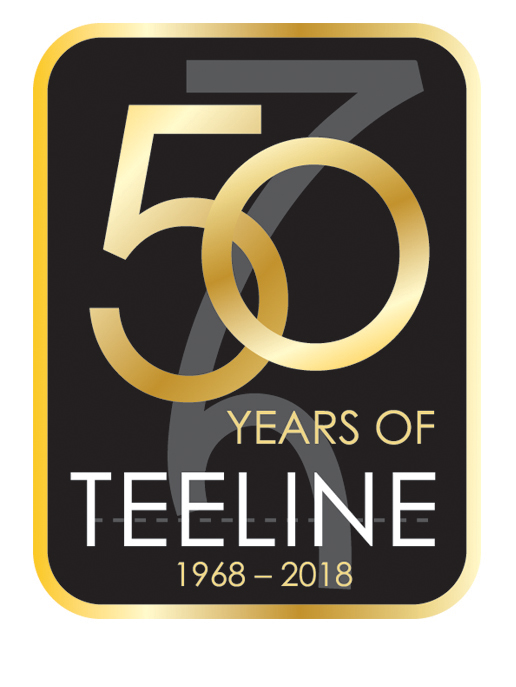The NCTJ celebrates 50 years of Teeline shorthand
2018 marks fifty years since the invention of Teeline shorthand, the fundamental skill for journalists, and the NCTJ is celebrating Teeline’s golden anniversary with a number of activities throughout the year, including a special ‘Tee party’ celebration at the NCTJ’s annual shorthand seminar in June.
“I’d urge every journalist to learn shorthand”, says ITV presenter Piers Morgan
“It’s undoubtedly one of the most useful skills I was taught at journalism college”, says Sky News presenter Sophy Ridge
 2018 marks fifty years since the invention of Teeline shorthand, the fundamental skill for journalists, and the NCTJ is celebrating Teeline’s golden anniversary with a number of activities throughout the year, including a special ‘Tee party’ celebration at the annual shorthand seminar in June.
2018 marks fifty years since the invention of Teeline shorthand, the fundamental skill for journalists, and the NCTJ is celebrating Teeline’s golden anniversary with a number of activities throughout the year, including a special ‘Tee party’ celebration at the annual shorthand seminar in June.
We are also calling on journalists, students and tutors to join our #showusyourTeeline social media campaign by sharing photos of themselves using, learning and teaching Teeline shorthand. Keep an eye on the NCTJ Twitter page, where we will also be sharing our word of the week with a different Teeline outline each Monday.
In addition, all shorthand certificates issued in 2018 will feature the anniversary logo to mark the achievement of candidates who pass their shorthand exams during the 50th year of Teeline.
A brief history of Teeline
Teeline was developed by James Hill, who was born near Bradford in 1908 and qualified as a teacher of Pitman shorthand by the age of 21. Determined to create a quicker and more straightforward method of teaching shorthand, Hill began experimenting as early as 1939, and he saw positive results when he began to teach unofficial, experimental classes to day-release journalism trainees at Clarendon College, Nottingham in 1966.
In 1968 the system was recommended to the NCTJ, and in November 1968 NCTJ shorthand consultant Harry Butler wrote: “We have on our hands a shorthand breakthrough which should solve longstanding shorthand problems. I have never known a shorthand system that can produce such good results in so short a time.”
Top journalists explain why Teeline is still important today
.jpg)
Piers Morgan, who completed his NCTJ training at Harlow College and is currently a presenter on ITV’s Good Morning Britain, said: “I was taught Teeline at Harlow by the legendary June Beavers, and it has always stood me in very good stead. Tape recorders are great until they don’t work, as I once discovered when I interviewed Rod Stewart for an hour and later could only hear my voice!
“Having an ability to take fast contemporaneous handwritten notes as a backup to technology is invaluable. I still use Teeline on Good Morning Britain during a big breaking news story live on air when I want to make a note of a powerful quote, and repeat it very soon afterwards. I’m not 100wpm as I was when I left Harlow, but I can still do OK. I’d urge every journalist to learn shorthand.”
(1).jpg) These words were echoed by fellow Harlow College alumni, Sky News presenter Sophy Ridge. She said: “I loved learning shorthand, despite the challenges of getting to the required words per minute! It’s undoubtedly one of the most useful skills I was taught at journalism college, and I still use it every day at work.”
These words were echoed by fellow Harlow College alumni, Sky News presenter Sophy Ridge. She said: “I loved learning shorthand, despite the challenges of getting to the required words per minute! It’s undoubtedly one of the most useful skills I was taught at journalism college, and I still use it every day at work.”
Sky Sports News executive editor Andy Cairns told us how important the skill is for Sky Sports News journalists: “As the pace of news gets faster, so too does the need for good, fast, accurate shorthand. Turning those quotes around quickly is vital and gives any journalist the edge over those without shorthand.
“Some of our presenters do short, sharp telephone interviews during three-minute ad breaks on Sky Sports News. They take down the answers in shorthand and then go live reading from their shorthand notes when we’re back on air. They couldn’t do that with longhand.”
NCTJ chairman and previous editorial director of Telegraph Group, Kim Fletcher, offered some advice for aspiring journalists: “Call me a saddo, but for 40 years I’ve written, doodled and dreamt in Teeline. It’s got me through court and council, kept me awake in conferences, moved things along in interviews. 120 wpm, since you ask.
“Sure you can use digital recorders these days, but a two-hour session means two hours of playback to find the right bit. You can thumb through a notebook in seconds. If you take the trouble to learn shorthand, maybe you are really serious about journalism. Employers take that view. So go on, you know it makes sense.”

